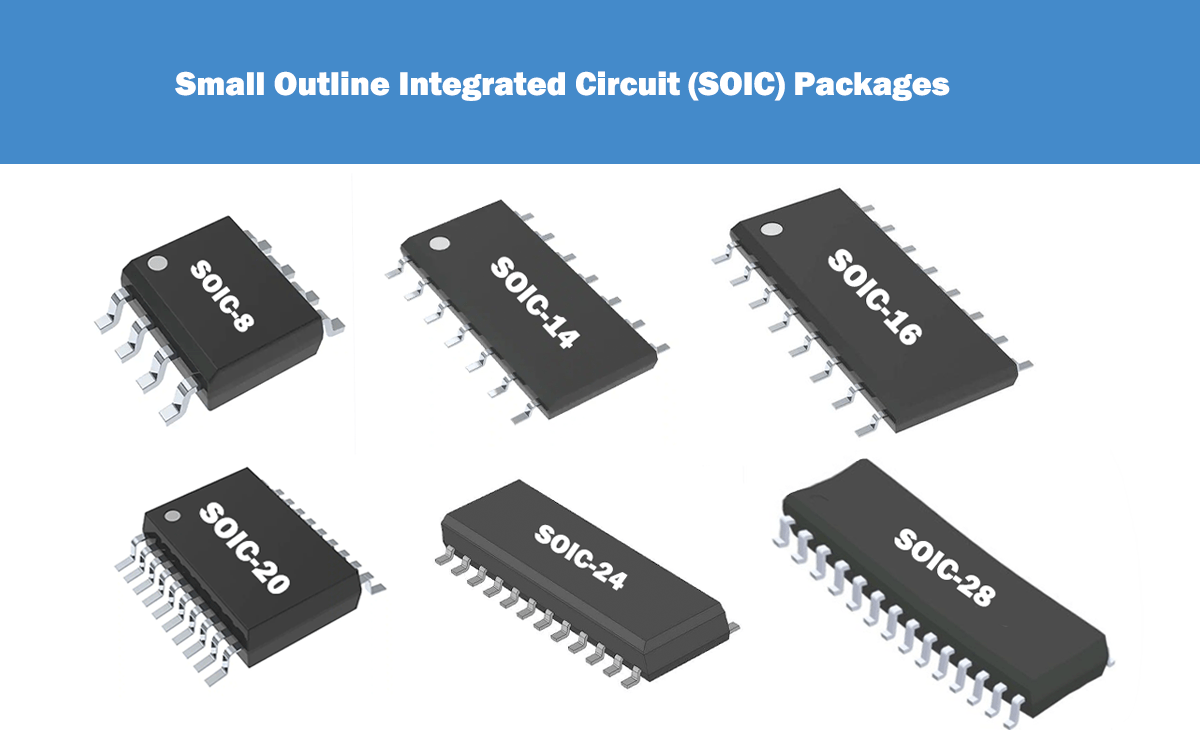What Is ATMEL Chips?
Atmel chips include both AVR and ARM cores. Among them, AVR includes Attiny series, AT90 series and ATmega series. ARM includes AT91 series.
Attiny Series
Atmel’s Attiny microcontroller integrates Atmel’s AVR microcontroller, flash memory, and SRAM. ATtiny series chips use Atmel’s patented picoPower technology with extremely low power consumption. The system clock frequency is controlled by software to achieve the best balance between system performance and power consumption. Additionally, these devices support SPI and TWI (with I2C-compatibility) communication for maximum flexibility.

Feature Introduction
- Low power consumption;
- On-chip debug;
- High performance;
- Low pin count;
- Internal oscillator;
- Low voltage operation;
- Programmable logic level on all pins;
- Enhanced power-saving sleep mode;
- In-system programmable Flash memory;
- Peripheral options including ADC, SPI, TWI, I2C, and USART.
Performance Parameter
- High performance AVR 8-bit Microcontroller;
- 2KB Flash, 128 bytes SRAM and 64 bytes EEPROM;
- Operating voltage range of 1.8V to 5.5V;
- 32 KB to 256 KB SPRAM;
- Up to 8MIPS throughput at 16MHz;
- Up to 16 interrupt sources;
- Six-channel 10-bit A/D converter;
- 8- or 20-pin package options;
- Up to 20MHz clock frequency;
- Up to 32KB of Flash memory;
- Up to 1KB of EEPROM;
- Up to 2KB of RAM.
Supported Attiny chip models
Below are our available ATMEL chips model for Attiny series to unlock:
- ATTINY24A
- ATTINY25A
- ATTINY45A
- ATTINY44A
- ATTINY84A
- ATTINY85A
- ATTINY28L
- ATTINY28V
- ATTINY26N
- ATTINY4
- ATTINY40
- ATTINY4313MMH
- ATTINY40
- ATTINY43U
- ATTINY828
- ATTINY87
- ATTINY10
- ATTINY20
- ATTINY5
- ATTINY9
- ATTINY862
- ATTINY88v
- ATTINY88
- ATTINY48
- ATTINY48A
Application
These Attiny microcontrollers are widely used in industrial and consumer electronics markets, such as automotive control boards, LCD TVs and monitors, notebook computers, mobile phones, etc. are ideal.
AT90 Series
AT90 series chips are RISC (reduced instruction set) single-chip microcomputer launched by ATMEL. It integrates timer, watchdog, power-on reset circuit, FLASH program memory, RAM and EEPROM data memory, 32 working registers, and has ISP function. Some of them also have asynchronous serial communication port, SPI serial port, PWM output, A/D converter, etc. The new AT90 chip provides a robust and secure remote transaction option for ATMs. It will also offer card-free ATM transactions by storing card data on the device.

Feature Introduction
- High-performance, low-power RISC architecture;
- On-chip Flash Program Memory;
- On-chip hardware debugging support;
- Power-on reset and power-saving sleep modes;
- On-chip oscillator and clock circuitry;
- Brown-out detection circuit;
- Two-wire Serial Interface;
- Interrupt and Wake-up on Pin Change;
- On-chip Debugging Support;
- Internal and External Interrupts;
Performance Parameter
- 0~16MHz working frequency;
- 1MIPS/MHz processing capacity;
- 120 double-byte instructions;
- 8~16 bit timer;
- 1K Bytes Internal SRAM;
- 32 general purpose working registers;
- On-chip 2-cycle multiplier;
- 16KB ISP Flash Memory;
- 256~512 Bytes EEPROM;
- 32 Programmable I/O Lines;
- 3 Timer/Counters;
- 8-bit AVR RISC-based microcontroller;
- 16K Bytes of In-System Programmable Flash;
- 6/8-channel 10-bit A/D Converter;
- Two 8-bit Timer/Counters with Separate Prescaler and Compare Mode.
Supported AT90 chip models
Below are our available AT90 chips model for unlock:
- AT90USB1286
- AT90USB1287
- AT90USB646
- AT90USB647
- AT90USB82
- AT90PWM81
- AT90CAN32
- AT90CAN128
- AT90CAN64
- AT90USB162
Application
The AT90 chip is based on the AVR RISC architecture and is also compatible with most AVR development tools. It features a low-power design that makes it ideal for applications that require minimal power consumption. The AT90 chip is typically used in embedded systems and can be programmed using the C programming language. It has a wide range of features, including digital and analog inputs/outputs, serial communication, and a wide range of peripherals.
Robotics components
In robotics, the AT90 chip is typically used to control motors, sensors, and other components. For example, it can be used to control motor speed and direction, or to read data from sensors. It also has built-in support for RS-232 communication, which makes it ideal for communication between robots.
Automation control
In automation applications, the AT90 chip is used to control machines and processes. For example, it can be used to monitor and control temperature, pressure, and other parameters in industrial processes.
Consumer electronics
In consumer electronics, the AT90 chip is often used as an interface for controlling devices such as TVs, DVD players, and home audio systems. It can also be used to control LED displays and other devices that require precise timing or input/output control.
ATmega Series
ATmega microcontroller is a high-end product in AVR. It has similar characteristics to AT90, and has more interface functions. It is more comprehensive and perfect in terms of power saving performance, stability, anti-interference and flexibility.

Feature Introduction
- Low power consumption;
- Real-time clock (RTC) and calendar;
- On-chip Analog Comparator;
- Low voltage operation;
- Programmable logic level on all pins;
- Enhanced power-saving sleep mode;
- In-system programmable Flash memory.
Performance Parameter
- Atmel AVR 8-bit microcontroller;
- Up to 16 MIPS throughput at 16 MHz;
- Operating Voltage: 2.7-5.5V;
- Up to 256KB Flash memory and 32K program memory;
- Up to 8KB SRAM and 128K EEPROM memory;
- Up to 32 I/O lines;
- Up to 32 interrupt sources;
- Up to 32 general purpose registers;
- Up to 8-channel 10-bit A/D Converter;
- Up to 2 UARTs and 4 USARTs;
- Up to 4 SPI/I2C interfaces;
- Up to 4 16-bit timer/counters;
- Up to 4 x 10-bit PWM channels.
Supported ATmega chip models
Below are our available ATmega chips model for unlock, they include ATMEGA128 series, ATMEGA32 series, ATMEGA16 series and more.
- ATMEGA32U2
- ATMEGA16U2
- ATMEGA8M1
- ATMEGA16M1
- ATMEGA32M1
- ATMEGA64M1
- ATMEGA8U2
- ATMEGA128RFA1
- ATMEGA128RFR2
- ATMEGA16HVB
- ATMEGA16U4
- ATMEGA16HVA
- ATMEGA256RFR2
- ATMEGA32U4
- ATMEGA603
- ATMEGA645
- ATMEGA32C1
- ATMEGA32HVB
- ATMEGA64C1
- ATMEGA64RFR2
- ATMEGA8HVA
- ATMEGA163
- ATMEGA164
- ATMEGA163L
- ATMEGA324PA
- ATMEGA324PV
- ATMEGA324
- ATMEGA324V
- ATMEGA164P
- ATMEGA164PA
- ATMEGA164PV
- ATMEGA165
- ATMEGAL165V
- ATMEGA165P
- ATMEGA165PA
- ATMEGA325
- ATMEGA325P
- ATMEGA328P
- ATMEGA329
- ATMEGA329P
- ATMEGA325PV
- ATMEGA325V
- ATMEGA328
- ATMEGA328PV
- ATMEGA329PV
- ATMEGA329V
- ATMEGA3250
- ATMEGA3290
- ATMEGA3290P
- ATMEGA3250P
- ATMEGA3250PV
- ATMEGA3250V
- ATMEGA3290PV
- ATMEGA3290V
- ATMEGA406
- ATMEGA644
- ATMEGA644P
- ATMEGA644PA
- ATMEGA644A
- ATMEGA644PV
- ATMEGA644V
- ATMEGA645V
- ATMEGA649
- ATMEGA6450
- ATMEGA6490
- ATMEGA6450V
- ATMEGA6490V
- ATMEGA103
- ATMEGA161
- ATMEGA323
- ATMEGAL161L
- ATMEGA323L
- ATMEGA640
- ATMEGA640V
- ATxmega128A1U
- ATxmega128A3
- ATxmega128A1
Application
These ATmega chips are widely used from smart home appliances to industrial robotics, medical equipment and more. They are the most popular MCUs in the world, and are the first choice for engineers who demand the utmost in performance and reliability.








